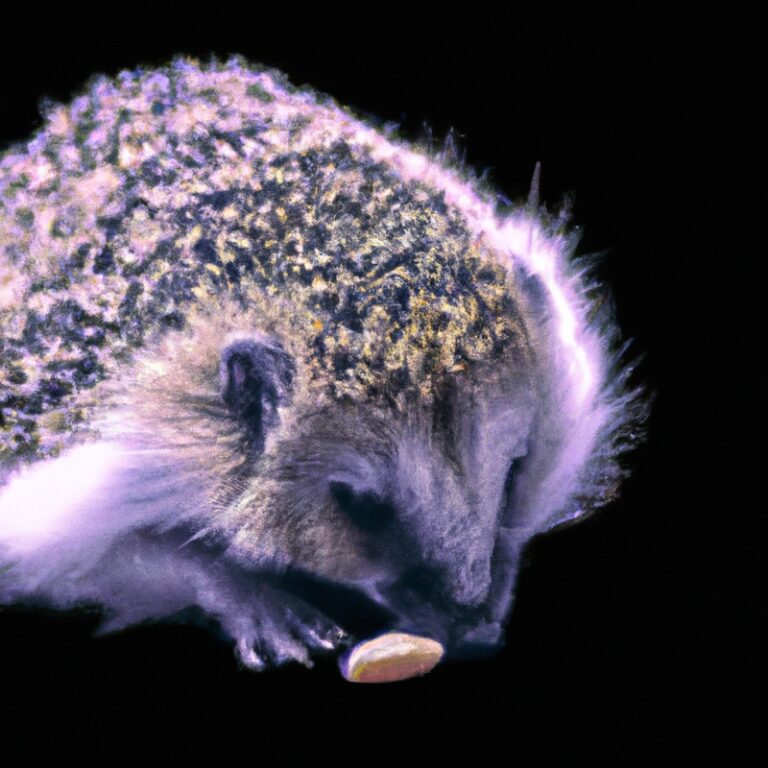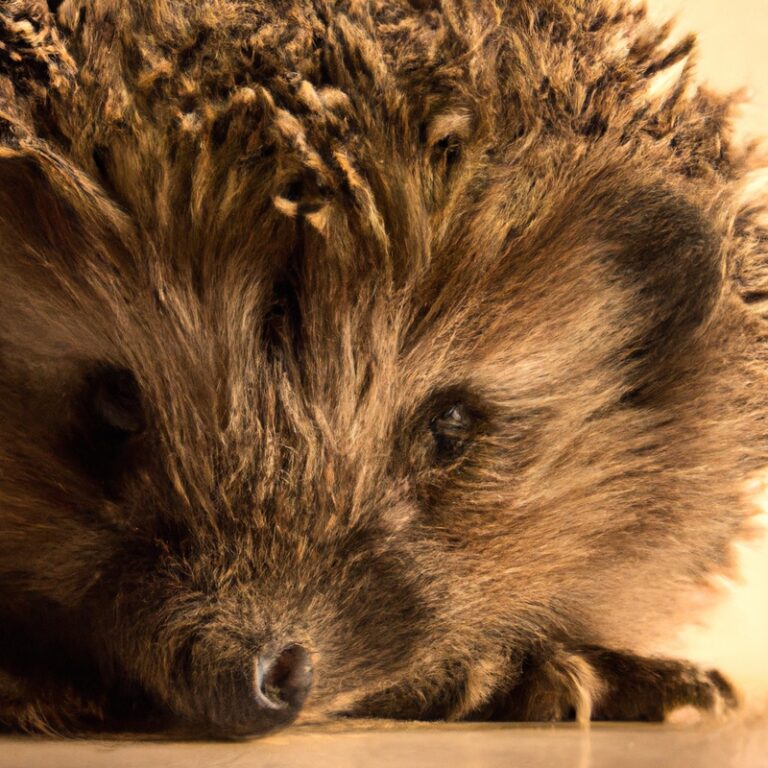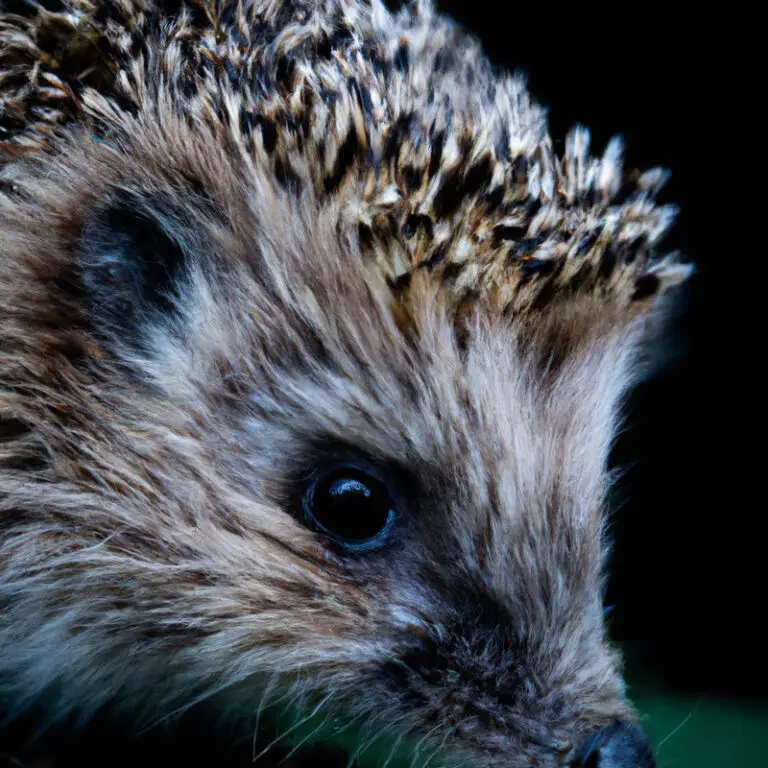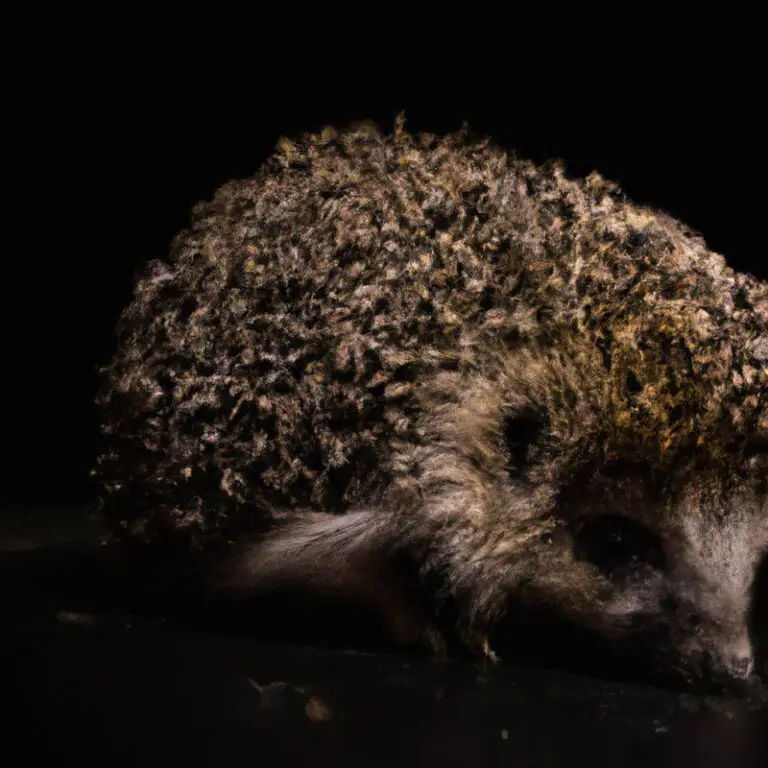What Is The Hedgehog’s Role In Local Ecosystems?
Key Takeaways:
- Hedgehogs play a crucial role in local ecosystems by controlling the population of small pests such as insects and slugs.
- Hedgehogs contribute to seed dispersal, aiding in plant growth and biodiversity.
- Their burrows provide shelter for other small animals and can enhance soil quality.
- Ensuring the conservation and protection of hedgehog populations is essential for maintaining a healthy and balanced local ecosystem.
Have you ever wondered about the tiny heroes lurking in your local ecosystems? We’re talking about the spiky, adorable hedgehogs! These little creatures play a vital role in maintaining the delicate balance of their habitats.
From being natural pest controllers to seed dispersers and soil aerators, hedgehogs contribute in numerous ways.
They gobble up insects, assist in plant regeneration, improve soil structure, and even impact local populations of mammals, reptiles, amphibians, and birds. But with increasing threats, it’s crucial to understand their significance and take action to protect them.
So, let’s dive into the fascinating world of hedgehogs and discover how they shape our local ecosystems!
| Role of Hedgehogs in Local Ecosystems | |
| Benefit | Explanation |
| 1. Pest Control | Hedgehogs feed on insects, slugs, snails, and other small pests, helping to control their populations. |
| 2. Seed Dispersal | As hedgehogs move through the environment, they can spread seeds on their fur or through their droppings, aiding in plant propagation. |
| 3. Biodiversity | By maintaining a balance in prey-predator relationships, hedgehogs contribute to the overall biodiversity of their habitats. |
| 4. Soil Aeration | As hedgehogs dig in search of food, they help to aerate the soil, promoting better nutrient absorption and root growth. |
| 5. Indicator Species | The presence or absence of hedgehogs in an ecosystem can be an indication of the overall health and quality of the environment. |
Hedgehogs as Natural Pest Controllers
Hedgehogs play a crucial role in controlling pests naturally.
Hedgehogs’ Diet and Feeding Habits
Hedgehogs have a diverse diet, consisting of insects, small vertebrates, and plant matter. They primarily feed on insects such as beetles, slugs, and worms.
Hedgehogs are opportunistic eaters and will also consume small birds, frogs, and mice.
They supplement their diet with fruits, berries, and fungi. Hedgehogs have a remarkable ability to adapt to different environments, which means their feeding habits may vary depending on what is available to them.
However, their diet is predominantly carnivorous, with insects being their primary source of nutrition.

Impact on Local Insect Population
Hedgehogs have a significant impact on the local insect population. They feed on a variety of insects, including beetles, caterpillars, slugs, and snails.
By doing so, they help control the population of these pests and prevent damage to gardens and crops.
Hedgehogs’ appetite for insects is an important ecological service that helps maintain the balance of local ecosystems. Their presence can reduce the need for chemical pesticides, making them valuable allies in pest control.
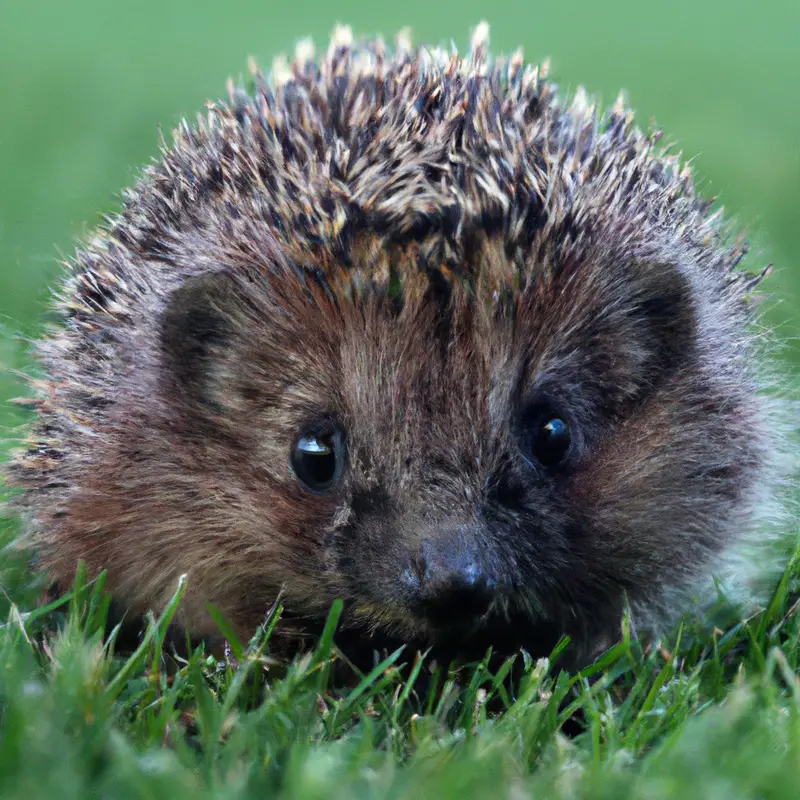
Benefits for Agricultural and Garden Environments
Hedgehogs provide numerous benefits in agricultural and garden environments.
Here are some significant advantages:
- Natural pest control: Hedgehogs eat a variety of pests, including slugs, snails, insects, and worms. By keeping their population in check, they help protect crops and gardens from damage.
- Soil aeration: As hedgehogs dig in search of their food, they inadvertently help aerate the soil, improving its structure and promoting healthy root growth.
- Fertilizer distribution: Hedgehogs also play a role in distributing natural fertilizers. Their droppings contain essential nutrients that enrich the soil and enhance plant growth.
- Biodiversity conservation: By creating hedgehog-friendly habitats, such as log piles and wildflower areas, farmers and gardeners can help support hedgehog populations. This, in turn, contributes to overall biodiversity conservation.
Overall, hedgehogs are valuable allies in maintaining a thriving agricultural and garden ecosystem.
Their presence can significantly benefit these environments in a natural and sustainable way.
Hedgehogs as Seed Dispersers
Hedgehogs play a role in seed dispersal within their local ecosystems. They help spread seeds through their consumption of fruits and berries, contributing to plant regeneration.
Consumption of Fruits and Berries
Hedgehogs play an important role in local ecosystems through their consumption of fruits and berries.
As they forage for food, hedgehogs help to disperse the seeds of these plants, contributing to their distribution and potential for future growth.
By including fruits and berries in their diet, hedgehogs also benefit from the nutritional value they provide.
This consumption of fruits and berries is a natural part of a hedgehog’s diet and helps to support both their own survival and the ecological balance of their environment.
Seed Dispersal Mechanisms
Seed dispersal mechanisms play a vital role in the survival and propagation of plants.
There are various ways through which seeds are dispersed in nature.
Wind dispersal is a common mechanism where lightweight seeds are carried by wind currents.
Animals also contribute significantly to seed dispersal, with birds, mammals, and even insects transporting seeds in their digestive systems, fur, or feathers.
Water dispersal is another mechanism, where seeds are carried by rivers, streams, or ocean currents.
Lastly, some plants have specialized structures that allow for self-dispersal, such as fruits that burst open or seeds that are propelled.
These mechanisms ensure the distribution of seeds over a wider area, increasing the chances of successful germination and establishment.
Contribution to Plant Regeneration
Hedgehogs play an important role in plant regeneration by acting as seed dispersers.
As they move through their environment, hedgehogs pick up seeds on their spines and fur, which are then carried to new locations when they travel.
These seeds can then germinate and grow, contributing to the overall diversity and resilience of plant communities.
By spreading seeds, hedgehogs help to ensure the survival and expansion of various plant species throughout their habitat.
Their role in plant regeneration highlights the interconnectedness and importance of all species in an ecosystem.
Hedgehogs’ Role in Soil Aeration
Hedgehogs play a significant role in soil aeration by their digging behavior.
Hedgehogs’ Digging Behavior
Hedgehogs have a natural instinct for digging, and this behavior plays an important role in their daily lives.
- Hedgehogs dig to create nests where they can rest and sleep during the day. These nests provide them with protection, insulation, and comfort.
- Digging also helps hedgehogs in finding food. They use their sharp claws to dig up insects, worms, and other small creatures that they feed on.
- Hedgehogs are known to dig burrows as well. These burrows serve as their homes and provide shelter from predators and extreme weather conditions.
- By digging, hedgehogs contribute to soil aeration and nutrient distribution. Their digging activity helps loosen the soil, allowing better water infiltration and root growth for plants.
- Hedgehogs’ digging behavior also helps in seed dispersal. As they move around and dig, they unintentionally bury seeds, aiding in the regeneration of plant species.
- It’s important to note that while hedgehog digging behavior can be beneficial, it may also cause damage to gardens and vegetable patches. Taking preventive measures, such as using barriers or creating hedgehog-friendly areas, can help mitigate any negative impact.
Effects on Soil Structure and Nutrient Cycling
Hedgehogs play a significant role in local ecosystems by enhancing soil structure and nutrient cycling.
Their foraging and burrowing activities help to aerate the soil, allowing oxygen and water to penetrate deeper and improving root growth.
This aids in nutrient absorption by plants and promotes the breakdown of organic matter, leading to increased nutrient availability.
Additionally, hedgehogs contribute to nutrient cycling by depositing their feces, which serve as natural fertilizers, enriching the soil with essential nutrients.
Impact on Microbial Activity
Hedgehogs play a significant role in maintaining the balance of microbial activity in local ecosystems. Their foraging activities and burrowing habits help to aerate the soil, creating favorable conditions for microbial growth and nutrient cycling.
By digging and disturbing the soil, hedgehogs enhance the microbial diversity and promote decomposition of organic matter.
This, in turn, contributes to the overall health and fertility of the soil, benefiting other organisms in the ecosystem. So, hedgehogs are important players in supporting microbial activity underground.
Hedgehogs’ Impact on Local Creature Populations
Hedgehogs play a significant role in regulating the populations of small mammals and reptiles in their local ecosystems.
Interaction with Small Mammals and Reptiles
Hedgehogs have various interactions with small mammals and reptiles in their ecosystems. They often prey on insects, such as beetles and caterpillars, which can benefit small mammals by reducing competition for food.
However, hedgehogs may also compete with small mammals, like mice and shrews, for resources.
When it comes to reptiles, hedgehogs have little interaction with them. They are primarily insectivorous and do not pose a threat to reptiles.
Overall, the impact of hedgehogs on small mammals and reptiles varies depending on the specific circumstances of their habitat.
Influence on Amphibian and Bird Populations
Hedgehogs have a notable impact on amphibian and bird populations.
They are known to eat a variety of invertebrates, some of which are predators or competitors of amphibians.
By reducing the number of predators and competitors in the ecosystem, hedgehogs can indirectly benefit amphibians by creating a more favorable environment for their survival and reproduction.
Additionally, hedgehogs also eat bird eggs and nestlings, which can have a negative effect on bird populations, especially ground-nesting species.
Thus, hedgehogs play a significant role in shaping the dynamics of amphibian and bird populations in their local ecosystems.
Importance for Biodiversity in Local Ecosystems
The presence of hedgehogs in local ecosystems is important for biodiversity. Hedgehogs play a role in controlling populations of insects and other invertebrates, helping to maintain a balanced ecosystem.
Additionally, hedgehogs are considered a keystone species, as their presence can impact the behavior and population dynamics of other animals in the ecosystem.
Overall, hedgehogs contribute to the overall health and diversity of the local ecosystem.
Threats to Hedgehogs in Local Ecosystems
Hedgehogs face threats in local ecosystems due to habitat loss, human intervention, climate change, and other environmental factors.
Habitat Loss and Fragmentation
Habitat loss and fragmentation are major threats to hedgehogs in local ecosystems.
As human activity continues to encroach upon their natural habitats, hedgehogs struggle to find suitable areas to live and forage for food.
Deforestation, urbanization, and the conversion of natural areas into agriculture or infrastructure have all contributed to the loss and fragmentation of hedgehog habitats.
This disruption of their environment makes it difficult for hedgehogs to move between patches of suitable habitat, find mates, and establish new populations.
Without sufficient habitat, their survival is at risk.
Human Intervention – Negative Impact
Human intervention can have a negative impact on hedgehogs in local ecosystems. Activities such as habitat destruction, pollution, and the use of pesticides can all harm hedgehog populations.
Clearing away vegetation removes their natural habitats, making it harder for them to find food and shelter.
Pollution, including air and water pollution, can also have detrimental effects on hedgehogs’ health. Pesticides can kill the insects that hedgehogs rely on for food, leading to a decrease in their population.
It is important to be mindful of these activities and take steps to protect hedgehogs and their habitats.
Climate Change and Other Environmental Factors
Climate change and other environmental factors pose significant threats to hedgehogs in local ecosystems.
The changing climate can disrupt the availability of food and water sources, as well as alter hibernation patterns.
Habitat loss due to deforestation, urban development, and pollution also reduces suitable areas for hedgehogs to thrive.
Pesticide use, which can contaminate their food supply, and road traffic accidents further contribute to their decline.
It is important to address these environmental challenges to protect hedgehog populations and maintain a balanced ecosystem.
Conservation Efforts to Protect Hedgehogs
Efforts to protect hedgehogs include creating hedgehog-friendly habitats, raising awareness and education, and involving local communities.
Creation of Hedgehog-Friendly Habitats
Creating hedgehog-friendly habitats is essential for their survival.
Here are some tips to create a welcoming environment for hedgehogs in your garden:
- Provide shelter: Create natural hiding spots by leaving patches of undergrowth, piles of leaves, or a log pile.
- Leave food and water: Hedgehogs feed on insects, so avoid using pesticides in your garden. Leave fresh water in a shallow dish and provide specialized hedgehog food.
- Connect gardens: Hedgehogs need space to roam, so consider creating hedgehog highways by removing or modifying fences or walls to allow them to access different gardens.
- Avoid hazards: Hedgehogs can get stuck in fencing, netting, or other garden hazards. Regularly check your garden for potential dangers and remove them.
By making these simple changes, you can make your garden a safe and welcoming place for hedgehogs to thrive.
Raising Awareness and Education
Raising awareness and education is key when it comes to protecting hedgehogs.
Here are some important ways to spread the word:
- Hosting educational workshops and events to teach people about hedgehog conservation.
- Collaborating with schools to incorporate hedgehog topics into their curriculum.
- Using social media platforms to share informative posts and raise awareness.
- Distributing informational brochures and leaflets at community centers and local events.
- Encouraging individuals to create hedgehog-friendly gardens by providing tips and resources. By educating and raising awareness, we can all play a vital role in protecting these beloved creatures.
Involvement of Local Communities
Local communities play a vital role in protecting hedgehogs and their habitats. They can help by creating hedgehog-friendly environments in their gardens, such as leaving wild areas, providing food and water, and avoiding harmful pesticides.
Communities can also support local hedgehog rescue centers through donations and volunteering.
Education and awareness campaigns initiated by local communities contribute to raising public knowledge about hedgehogs and inspiring others to take action. Together, the involvement of local communities can make a significant difference in the conservation efforts for hedgehogs.
Frequently Asked Questions (FAQs)
What do hedgehogs eat in local ecosystems?
Hedgehogs are omnivores, meaning they eat both plants and animals.
In local ecosystems, hedgehogs primarily feed on insects like beetles, slugs, caterpillars, and worms.
They also consume small mammals such as mice and shrews, as well as bird eggs and fruits.
Hedgehogs have a diverse diet that helps regulate populations of certain pests and contributes to the balance of the ecosystem.
However, it’s important to remember that hedgehogs also need access to fresh water for hydration.
How do hedgehogs contribute to biodiversity?
Hedgehogs contribute to biodiversity in several ways. Firstly, they help control populations of insects and other invertebrates, which can have a significant impact on ecosystems.
By eating these small creatures, hedgehogs help maintain a balance in the local food chain.
Secondly, their foraging habits help disperse seeds, aiding in plant reproduction and the spread of plant species. Lastly, hedgehog droppings contain nutrients that enrich the soil, supporting the growth of plants and providing a valuable contribution to the ecosystem.
So, these prickly creatures play a vital role in maintaining biodiversity in their local environments.
How can we help protect hedgehogs in our local area?
To help protect hedgehogs in our local area, there are a few simple steps we can take. First, ensure there is enough food and water available for hedgehogs by putting out bowls of fresh water and leaving out cat or dog food.
Second, create hedgehog-friendly habitats by leaving areas of your garden wild and providing shelter, such as log piles or hedgehog houses.
Finally, avoid using pesticides and chemicals in your garden, as these can be harmful to hedgehogs and their food sources.
Final Verdict
Hedgehogs play a vital role in local ecosystems as natural pest controllers, seed dispersers, soil aerators, and contributors to biodiversity. Their diet consists of insects, which helps control pest populations and promote balance in agricultural and garden environments.
By consuming fruits and berries, they aid in seed dispersal and plant regeneration.
Additionally, their digging behavior improves soil structure and nutrient cycling while enhancing microbial activity. Hedgehogs also interact with other creatures, influencing creature populations and promoting biodiversity.
However, they face threats from habitat loss, human intervention, and climate change.
Conservation efforts, such as creating hedgehog-friendly habitats and raising awareness, are crucial for protecting these remarkable creatures. By taking action, we can contribute to the preservation of hedgehogs and the health of our local ecosystems.


